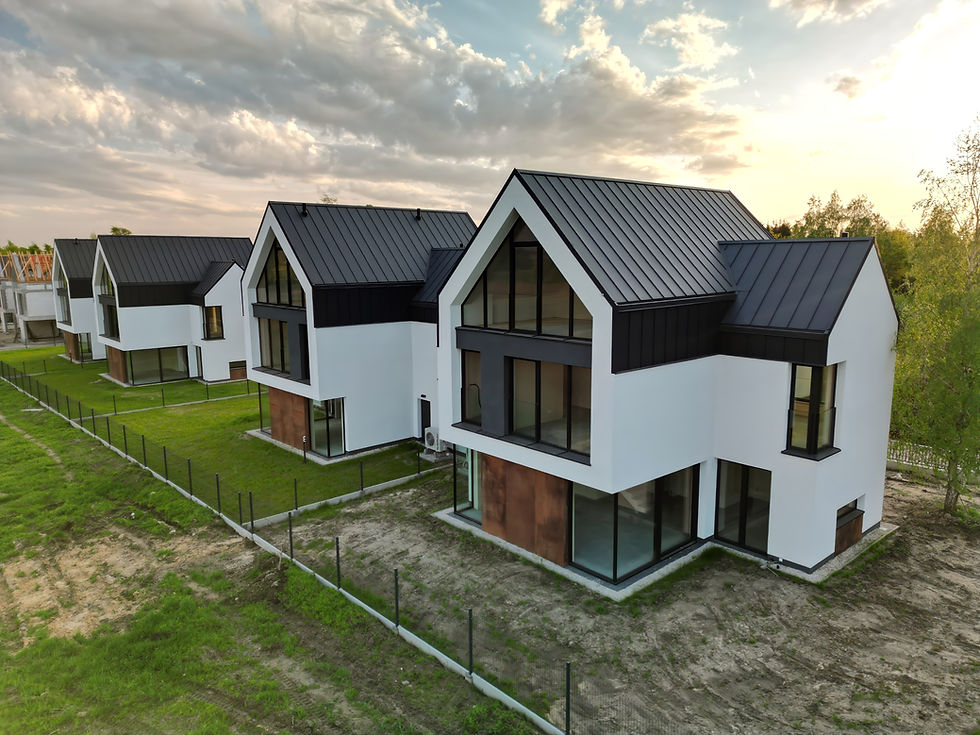Urban retrofit supported by circular design and material reuse
REFEA supports retrofit-first design strategies that reduce carbon, retain structural value, and enable reuse-led development in constrained urban sites.

%20Strategy%20(7)_edited.png)
Structural retention and reuse
%20Strategy%20(7)_edited.png)
Reclaimed material specification
%20Strategy%20(7)_edited.png)
Circular infrastructure design
Retrofit projects give us the chance to do something genuinely sustainable. There’s a real satisfaction in taking what’s already there and making it work for a new purpose - structurally, environmentally, and practically. It’s not about compromise; it’s about designing smarter, with less waste and more intention.
Mark Weston
Structural Engineer
REFEA provides structural and civil engineering input on retrofit schemes where existing buildings can be adapted for new use - rather than demolished. In this type of project, we assess what can be retained, reused, or reconfigured, helping clients reduce embodied carbon and preserve the value of existing structures.
Working with architects and developers from the outset, we identify reuse opportunities across primary and secondary structural elements, advise on reclaimed materials, and design for future disassembly where appropriate. Our circular design approach also supports clients working toward BREEAM, LETI, or RIBA sustainable outcomes targets.
Civil engineering input includes upgrades to drainage infrastructure using permeable surfaces, rainwater attenuation, and low-intervention solutions that work within the constraints of dense urban plots. Our early involvement ensures that circular principles are practical, cost-aware, and technically deliverable - not just aspirational.

Focus Areas
REFEA’s work is guided by six core principles that drive sustainable structural and civil engineering - turning practical design decisions into low-carbon outcomes across East Anglia.
Reuse First
Prioritising existing structures and materials to reduce waste and embodied carbon.

Early Design Collaboration
Involving engineers early to embed sustainability from concept to construction.

Low-Carbon Materials
Specifying materials with lower embodied carbon and designing for material efficiency.

Circular Design Thinking
Designing for adaptability, longevity, and future reuse from the outset.
%20Strategy%20(3)-min.png)
Integrated Drainage Solutions
Embedding SuDS into civil engineering for sustainable, climate-resilient developments.

Practical Sustainability
Delivering buildable, cost-conscious solutions that meet real environmental targets.

Sustainable
structures

east anglia
As structural engineers, we have a unique opportunity to influence how the built environment responds to the climate crisis. Reuse isn't just about saving materials - it's about rethinking value, preserving what works, and designing with long-term resilience in mind. Through REFEA, we hope to make reuse a more practical and achievable option on projects across East Anglia by sharing knowledge, highlighting viable approaches, and supporting early-stage design decisions.
Mark Weston
Structural Engineer, JMS Engineers
Knowledge is key to sustainable change. Explore our latest insights and technical resources:

Path to a Low-Carbon Built Environment
The built environment contributes nearly 40% of global carbon emissions, much of it through construction and materials. In East Anglia, reducing embodied carbon is critical to meeting sustainability goals. By reusing structures, designing efficiently, and integrating low-impact civil solutions, we can reshape how the region builds - and lead the way towards a net zero future.


%20Strategy%20(1)_edited.png)









